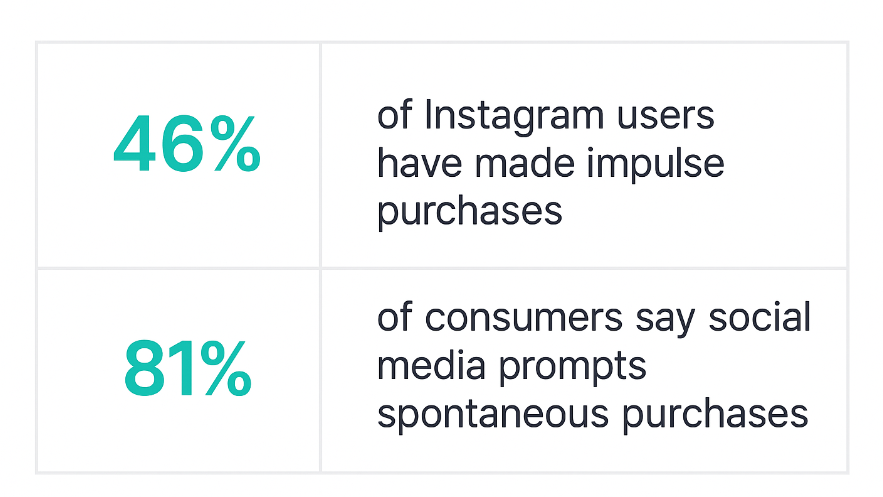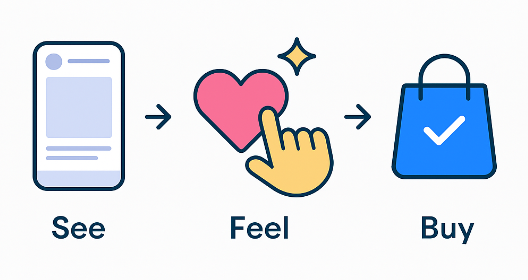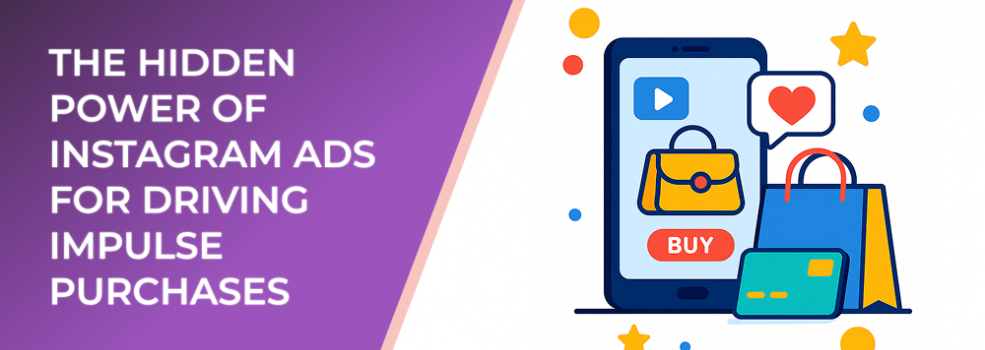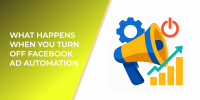Instagram combines visual appeal, emotional storytelling, and seamless shopping experiences—all key factors in spontaneous purchasing behavior. According to Meta, over 70% of shoppers say they make purchase decisions on Instagram, and 44% of people use Instagram to shop weekly.

Percentage of users who have made impulse purchases via Instagram and spontaneous buying influenced by social media
Unlike other platforms, Instagram’s ad experience blends naturally with organic content. Ads appear between stories or posts, making them feel like part of a user’s normal browsing flow. This reduces resistance and increases the likelihood of an instant click or purchase.
1. Visuals That Trigger Emotion
Impulse buying is emotional, not logical. Eye-catching visuals—especially those featuring products in lifestyle settings—create desire within seconds. Research shows that visuals influence up to 93% of consumer buying decisions.
To maximize impact, use:
-
High-contrast colors and movement (videos or reels outperform static images by up to 60%)
-
Real-life scenarios or emotional storytelling
-
Subtle cues like hands using or holding the product (which increases relatability)

Percentage of users who have made impulse purchases via Instagram and spontaneous buying influenced by social media
When users see a visually engaging product that aligns with their aesthetic, they’re more likely to buy without hesitation.
2. The Role of Social Proof
Social validation drives impulse buying. Reviews, user-generated content (UGC), and influencer endorsements reduce uncertainty and build trust quickly.
According to a Meta study, 83% of Instagram users discover new products or services on the platform, and most cite peer recommendations or influencer content as deciding factors. Even a simple tag like “as seen on Instagram” can boost purchase intent.
Brands that integrate UGC into their ads—such as real customers unboxing or using products—often see conversion rates increase by 30–40% compared to traditional brand ads.
3. Instant Shopping Experience
Instagram’s native checkout and “Shop Now” features eliminate friction. Users can go from discovery to purchase without leaving the app. The fewer steps in the buying process, the higher the impulse conversion rate.
Studies show that simplifying checkout can increase sales by up to 35%, especially for impulse-driven products like fashion, beauty, and gadgets. By pairing fast-loading product pages with one-tap payment options, brands can capture the user’s decision before they reconsider.
4. Personalized Targeting That Feels Natural
Instagram’s algorithm uses behavioral signals to deliver hyper-relevant ads. The platform analyzes user activity—likes, saves, searches, and even dwell time—to show products that align with their interests.
For instance, a user who saves fitness content might see athletic wear ads shortly after. This precision targeting creates the feeling that the ad “just gets them,” leading to spontaneous purchases. Personalized ads can boost engagement rates by 80% compared to generic campaigns.
5. Leveraging Limited-Time Offers
Scarcity and urgency are powerful motivators for impulse buying. Ads that feature countdowns, flash sales, or “Only 2 left in stock” cues can double conversion rates.
For example, a clothing brand that used limited-time offers in Instagram Stories reported a 65% increase in click-through rate and a 40% higher conversion rate compared to standard campaigns.
To make this tactic effective:
-
Use Stories or Reels for short-lived promotions
-
Pair urgency messaging with clear CTAs (“Shop Now,” “Grab Yours Before It’s Gone”)
-
Combine countdown stickers with visual cues like flashing icons or product highlights
6. Influencer and Creator Ads
Instagram influencers act as digital word-of-mouth marketers. Creator partnerships humanize brands and make products feel more attainable. When followers trust a creator’s recommendation, they’re far more likely to act on impulse.
In fact, 49% of consumers rely on influencer recommendations, and Instagram remains the top platform for influencer marketing. Sponsored Reels or Stories often outperform regular ads in both engagement and direct conversions.
Collaborating with micro-influencers can also yield high ROI, as their smaller but highly engaged audiences respond more authentically to recommendations.
7. The Future of Impulse Buying on Instagram
With ongoing developments like AI-driven recommendations, AR try-ons, and seamless integration with e-commerce tools, Instagram is doubling down on impulse buying features.
By merging entertainment with instant shopping, the platform is transforming casual browsing into consistent revenue opportunities. Brands that understand and harness these psychological triggers will thrive in this next era of social commerce.
Related Articles from LeadEnforce
-
How to Analyze Campaign Data to Identify Growth Opportunities
-
How to Define a Target Audience for Marketing: A Step-by-Step Guide
-
How AI Tools Are Changing the Way E-Commerce Brands Run Facebook Ads
Final Thoughts
Instagram’s ability to blend visuals, social proof, and seamless shopping makes it one of the most powerful platforms for impulse buying. By understanding what emotionally motivates users and reducing friction in the buying journey, brands can turn casual scrollers into loyal, spontaneous customers.

